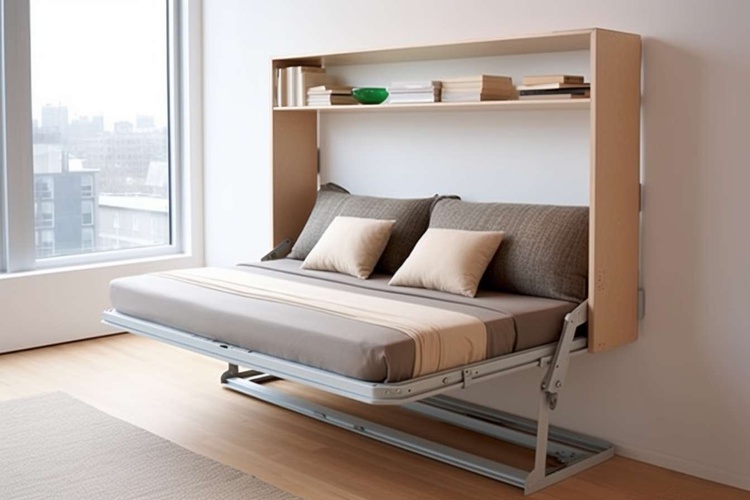Micro-Unit Living: Maximizing Space in Urban Real Estate
Introduction: Urban living is undergoing a radical transformation as cities grapple with housing shortages and skyrocketing rents. Enter micro-units: compact, efficient living spaces that challenge traditional notions of home. This innovative housing trend is reshaping urban landscapes and redefining what it means to live small without sacrificing quality of life.

Historical Context and Development
The roots of micro-unit living can be traced back to the early 20th century when urbanization led to the development of single-room occupancy hotels. These provided affordable housing for workers in growing cities. However, the modern micro-unit movement began in earnest in the 1990s, driven by changing demographics, increased urbanization, and evolving lifestyles.
Current Market Trends
Recent years have seen a surge in micro-unit developments across major cities. In New York City, for instance, the first micro-apartment complex opened in 2016, featuring units as small as 260 square feet. San Francisco, Seattle, and Boston have followed suit, with developers capitalizing on the growing demand for affordable urban housing.
Market data indicates a steady increase in micro-unit occupancy rates, often surpassing those of traditional apartments. This trend is particularly pronounced among millennials and young professionals who prioritize location over space and are willing to trade square footage for prime urban addresses.
The Economics of Micro-Living
Micro-units offer a unique value proposition in expensive urban markets. While the per-square-foot cost is often higher than traditional apartments, the overall monthly rent is typically lower due to the reduced size. This makes desirable neighborhoods accessible to a broader range of renters.
For developers, micro-units present an opportunity to maximize returns on high-value land. By increasing the number of units per building, developers can potentially achieve higher overall rental income. However, this comes with increased construction costs due to the need for efficient design and high-quality finishes to make the small spaces livable.
Design Innovations in Micro-Units
The success of micro-unit living hinges on innovative design solutions. Architects and interior designers are pushing the boundaries of space efficiency, incorporating features like:
-
Multi-functional furniture (e.g., Murphy beds that transform into desks)
-
Sliding walls to create flexible living areas
-
Built-in storage solutions that maximize vertical space
-
High ceilings to create a sense of openness
-
Large windows to bring in natural light and create an illusion of space
These design elements are crucial in making micro-units not just livable, but desirable. The goal is to create spaces that feel larger than their actual square footage, offering residents a comfortable and functional living environment.
The Impact on Urban Planning and Development
The proliferation of micro-units is influencing urban planning strategies. Cities are reevaluating zoning laws and building codes to accommodate these smaller living spaces. For instance, some municipalities have reduced minimum square footage requirements or altered parking regulations for micro-unit developments.
This shift in housing policy reflects a broader trend towards density and sustainability in urban planning. Micro-units can potentially increase housing supply without expanding city footprints, aligning with goals for sustainable urban growth.
Challenges and Criticisms
Despite their growing popularity, micro-units face criticism and challenges:
-
Concerns about long-term livability and potential negative impacts on mental health
-
Questions about the effect on neighborhood demographics and local communities
-
Worries that micro-units may drive up per-square-foot rental prices, potentially affecting the broader housing market
-
Building code and zoning hurdles in cities not yet adapted to this housing type
Addressing these concerns will be crucial for the continued growth and acceptance of micro-unit living.
The Future of Micro-Unit Living
As urban populations continue to grow and housing affordability remains a pressing issue, micro-units are likely to play an increasingly important role in the real estate landscape. Future developments may include:
-
Integration of smart home technology to further enhance space efficiency
-
Communal amenities that complement private micro-units, fostering a sense of community
-
Sustainable design features to reduce environmental impact and operating costs
-
Adaptable units that can be combined or reconfigured as residents’ needs change
The micro-unit trend also has potential implications for suburban and rural areas, where they could provide affordable housing options for single-person households or serve as accessory dwelling units.
Conclusion
Micro-unit living represents a significant shift in urban housing, challenging traditional notions of space and home. As cities continue to evolve, these compact living spaces offer a potential solution to housing shortages and affordability issues. While not without challenges, the innovative design and efficiency of micro-units suggest they will remain a key part of the urban real estate landscape for years to come. For investors, developers, and city planners, understanding and adapting to this trend will be crucial in shaping the future of urban living.





